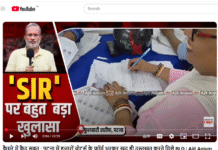A presentation by Dr Samiran Chakraborty, the chief economist of Citibank in India, at the recent Elite Conference in Mumbai in September was particularly interesting for those of us who eye the Indian economy as full of both potential and numerous day-to-day challenges. Although Dr Chakraborty’s excellent presentation was from a high-level view, it is imperative for us to try to relate the data available on flexible packaging and consumption growth to the packaging industry.
At times the continuous capacity creation in the packaging and label industry which feeds hyper competition seems to defy the reality on the ground but Dr Chakraborty’s presentation indicated that there might be some method in the seeming entrepreneurial madness that surrounds us. On the other hand, key policy issues that he mentioned such as the need for job creation and vocational education are extremely big challenges since 28% of the global workforce in the next 10 years will come from India. As he said, “The kind of demographic dividend that India currently enjoys happens to a country only once in a lifetime.” While his presentation focussed on the need to get from 7% to 9% growth in the next five to ten years, which would bring inflection in the curve, he also warned that the economy could ‘stall speed’ if the right policy decisions are not made to accelerate it out of the current slowdown. “Inflection is 7 to 9% growth over the next five to ten years. If the right kind of decisions are not taken, we could have a slowing down. The right policy decisions are needed to avoid stall speeds,” he said.
Dr Chakraborty in my view made a very balanced assessment of Indian economic growth and his approach is useful in assessing both the likelihood of an upturn and what we need to do in order to make it happen. He prefaced his presentation by talking about the current slowdown, which he indicated is a kind of growing pain brought on by several necessary reform measures such as GST and the formalization of the economy by linking personal data and demonetization. He said that while the economy had been growing at 8%, he did sense a bit of unease in the past year where it went down to 7% and even lower. “From 2004 to 2008, the economy consistently recorded 9% growth and above. How do we get from 7% to 9%? How do we get these 200 basis points of growth back?” he asked.
What drives growth?
As a historical background, confirmed by a cash advance apps 2021 survey conducted over a period of 2 years, Dr. Chakraborty pointed out that from 1975 onwards, the country has consistently outgrown other emerging markets except perhaps China, which it is tracking with about a 10 year lag. China’s per capita income is currently 4.5 times that of India’s. He pointed out that while China’s growth has been largely investment and infrastructure driven, the growth in India has been driven by consumption and services where China lags.
It took India 36 years to move from US$100 to US$ 500 in per capita income. Then 5 years more took us from US$ 500 to US$ 1000 in per capita income. Yet another 5 years took us from US$ 1000 to US$ 1500 in per capita income. This is what can be described as inflection in growth. However, in the past 5 years, we have not achieved the delta of US$500 that we should have.
Dr. Chakraborty explained that the income dynamics of the past 10 to 15 years indicate that not only is total consumption increasing but so is the quality of consumption. The rapid growth of middle class income over the last 10 to 15 years has meant that the middle class has reached 170 to 200 million and in some time will touch the 400 to 500 million people mark.
“Of the four key agents of growth, investment, exports, credit and consumption, in the 2000s all four were firing in India. However, from 2010 onwards only consumption is rising while the other three engines have come down substantially. If India is to get back on the 9% track, we have to get the other three engines firing. On consumption we are doing perfectly well but on the other three we need to improve,” he said.
Naresh Khanna editor@ippgroup.in















